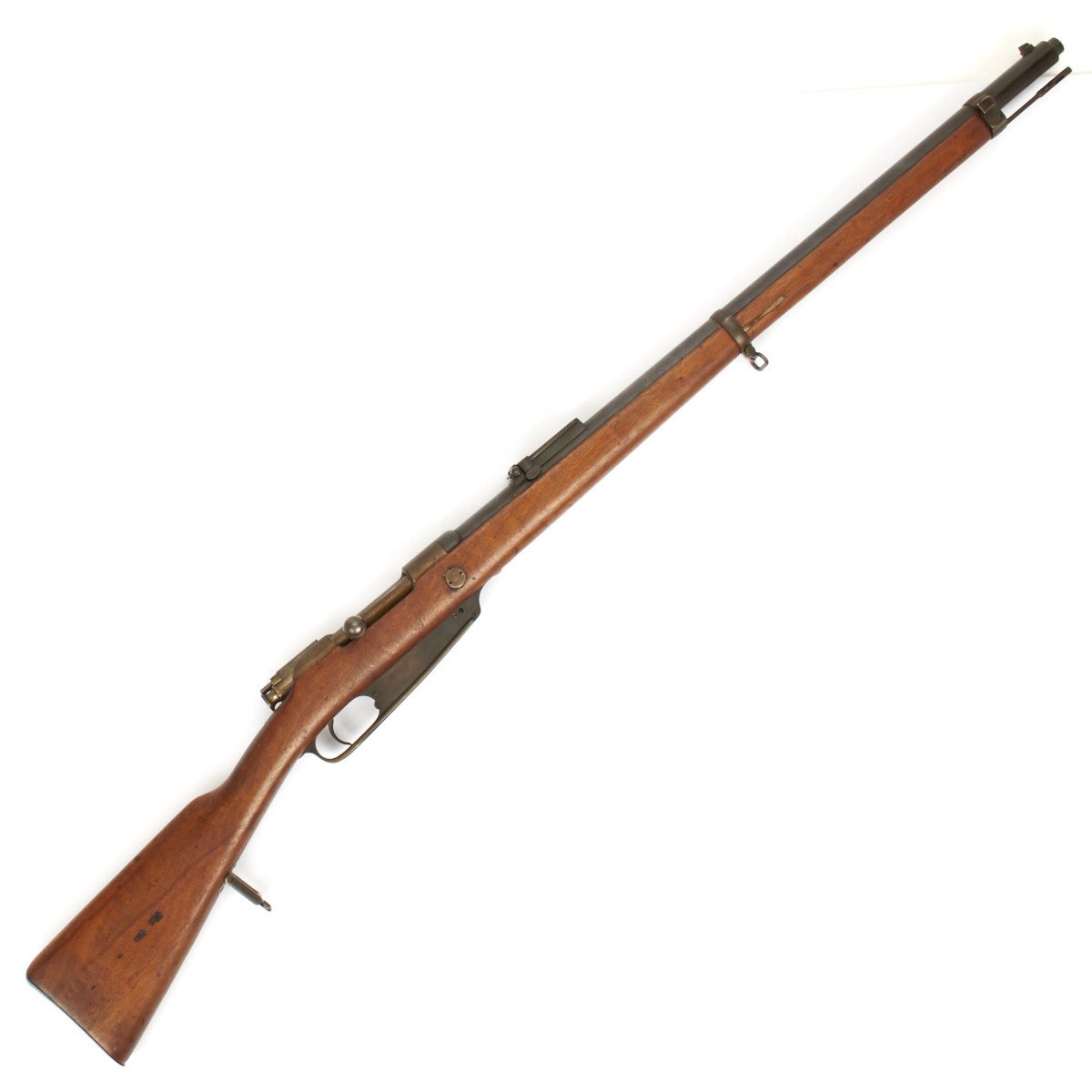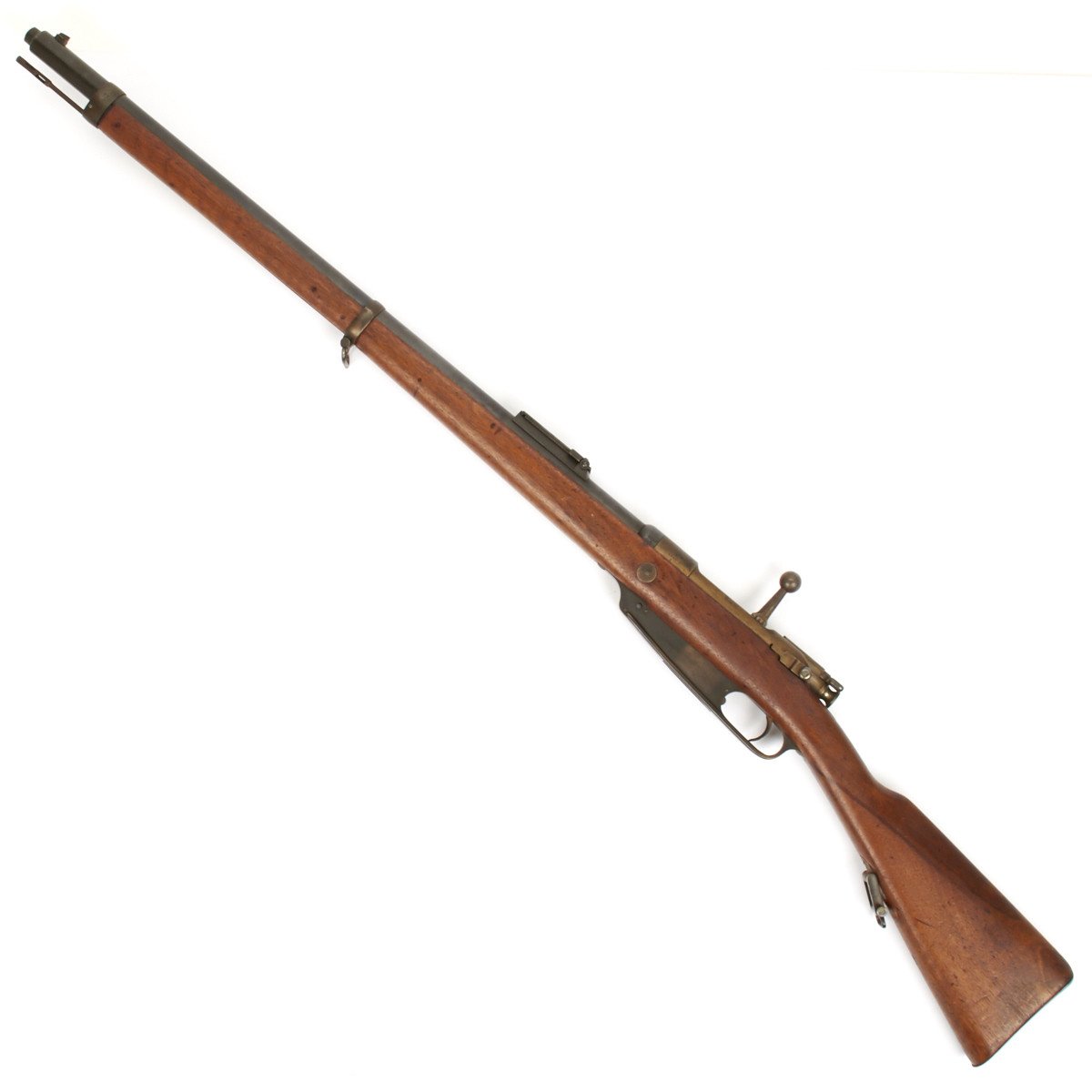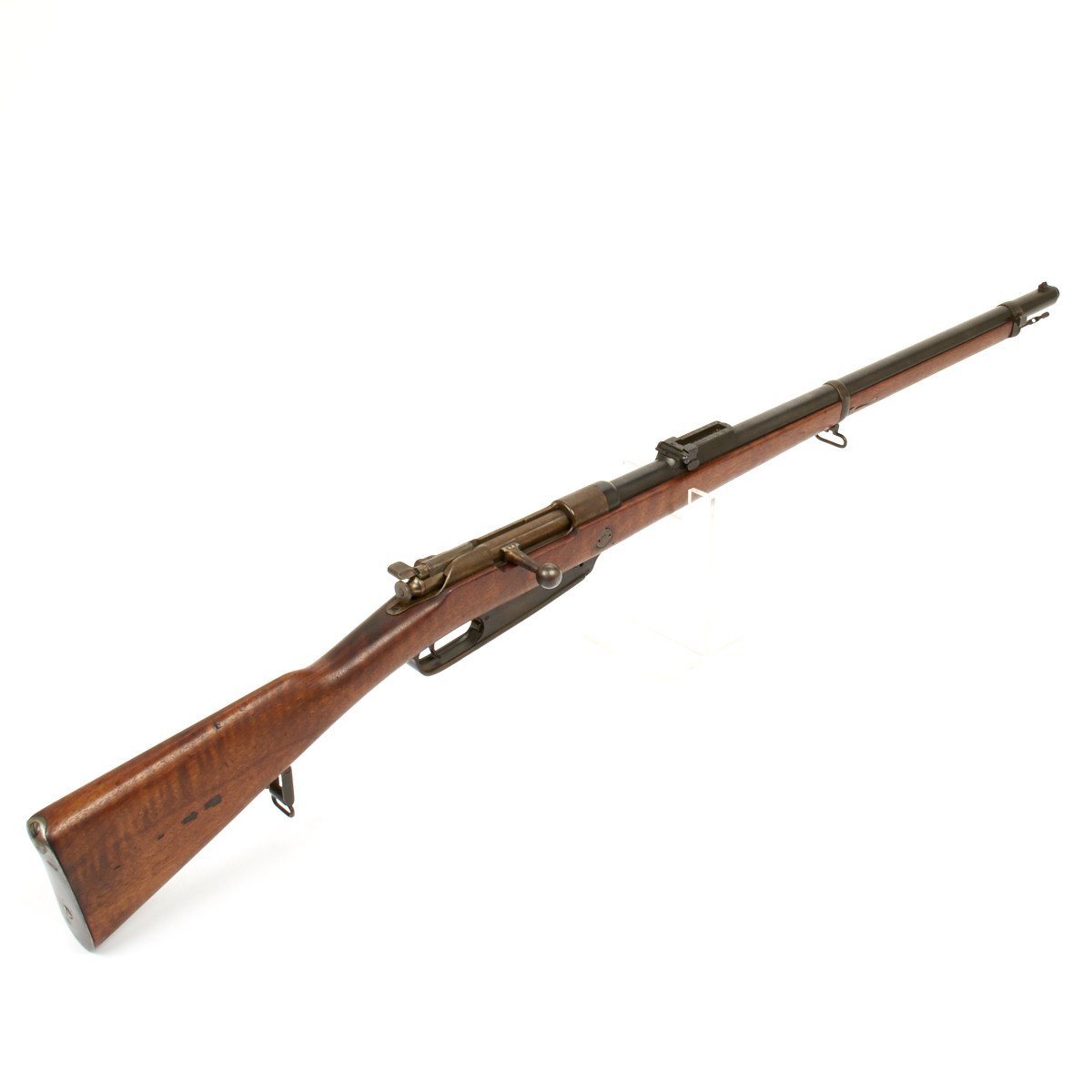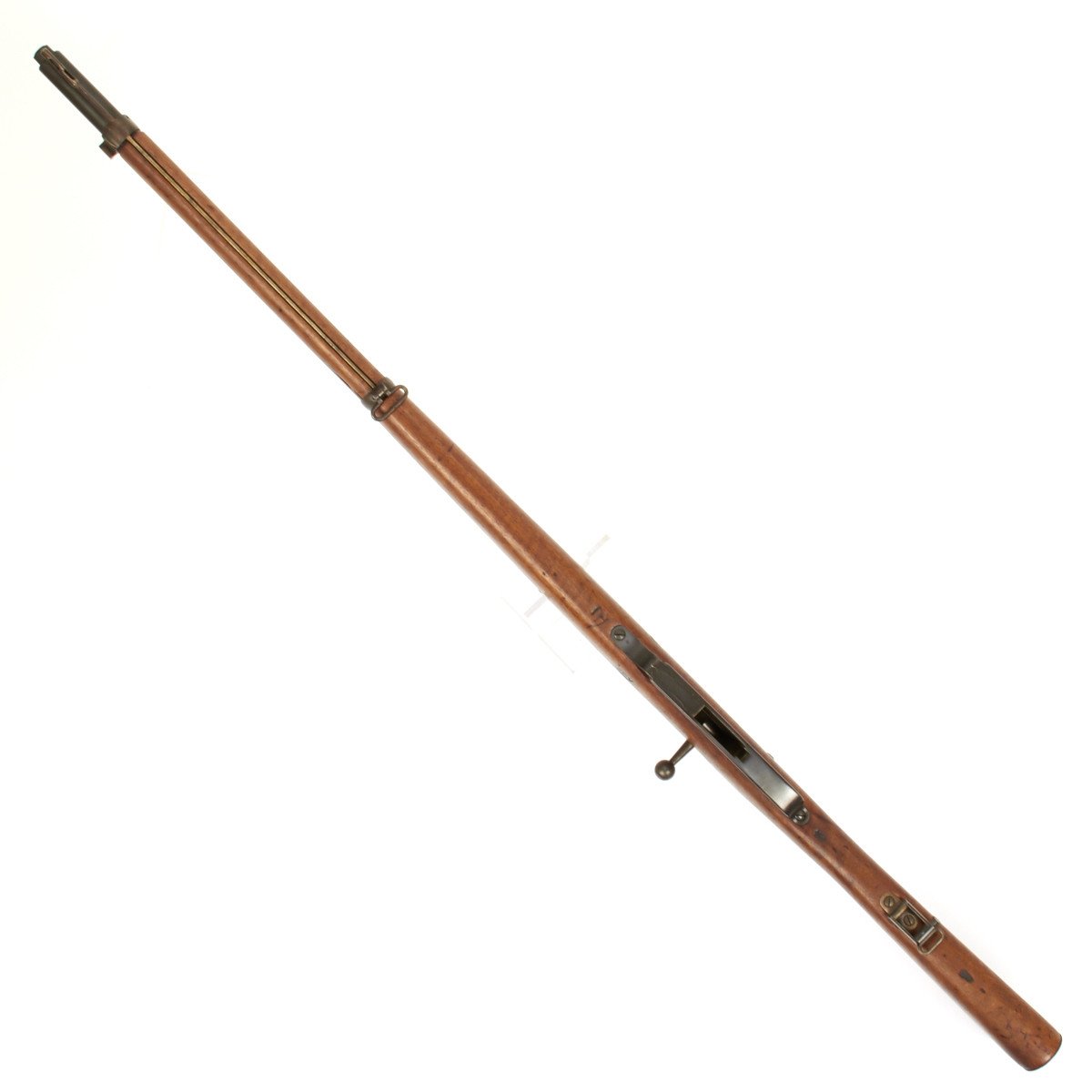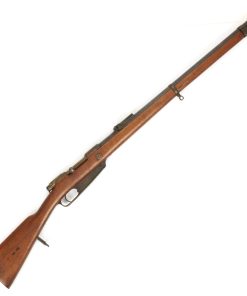Original German Mauser 1888 Commission Infantry Rifle by Steyr Original Items
$ 1.495,00 $ 373,75
Original Item: Only one Available. This rifle is very rare as it was never converted for the “Spitzer” cartridge and it is of early production having been manufactured in 1891.
In 1886, the French Army unveiled the Modelle 1886 Lebel rifle. There was an immediate reaction in German military circles bordering on hysteria. Why? Because the Lebel was the worlds first small bore military rifle using an efficient smokeless powder cartridge. Now, the Lebel, which used a tubular magazine located under the barrel was not a particularly noteworthy design, but the power and flat trajectory of the new French 8mm round far outclassed the 11mm Reichspatrone black powder round used in the contemporary German infantry rifle, the Mauser 71/84.
In this rather charged atmosphere, the German Gewehr Prfungs Kommission (GPK – Rifle Testing Commission) went to work. Initially, the idea was to revise the Mauser Gewehr 71/84 to use a small caliber smokeless powder round based on the old 11mm black powder Reichspatrone. To this extent, production machinery was ordered from the Ludwig Loewe Company of Berlin-Charlottenburg in December, 1887. As things progressed, the GPK became disillusioned with this technical approach, and so a rather strange hybrid of ideas took shape.
The bolt design was highly revised by a Spandau Arsenal technician named Louis Schlegelmilch and features a separate bolt head. The ensuing rifle had a Schlegelmilch/Mauser action, a five shot clip loaded Mannlicher style magazine (note: while the clip falls out as with the Mannlicher clips, this one was markedly improved in that it could be loaded with either end down as opposed to only one end on the true Mannlicher), and a full length barrel jacket designed by Armand Mieg. The pitch and profile of the rifling were copied directly from that of the Lebel. The cartridge chosen was a modified Swiss style rimless design based on the ideas of Eduard Rubin. By March 23, 1888, the Bavarian military observer in Berlin, General von Xylander reported that the development was virtually complete.
Field trials for the new rifle were completed in November, 1888, and the GPK recommended that it be adopted immediately. The adoption orders were signed by Kaiser Wilhelm II on November 12, 1888. Issue of the Gewehr 88 as the new rife was designated, were first made in the spring of 1889 to the XV and XVI Armeekorps stationed in Elsass-Lothringen. Issue to the Bavarian military units began in October 1889, and by August 1890, all Prussian, Saxon, and Wrttemberger line units had been re-equipped.
The Gewehr 88 was made by the three primary Prussian arsenals at Danzig, Erfurt, and Spandau, a smaller Bavarian establishment at Amberg, as well as several private contractors, including the Ludwig Loewe Company, Osterreichische Waffenfabrik Gesellschaft (Steyr), and Haenel. Production figures up to the time production ceased in 1897 are as follows:
Prussian Government Arsenals: 750,000
Amberg: 425,000
Loewe: 425,000
Steyr: 300,000
Haenel: 100,000
Total: 1,675,000
Our example is in very choice condition overall with mismatched serial number bolt and most importantly does not have the tell tale “notch” cut into the rear of the receiver ring to accept the slightly longer spitzer cartridge, nor does it have the resultant “S” stamped onto the top of the chamber.
NOTE: International orders of antique firearms MUST be shipped using UPS WW Services (courier). USPS Priority Mail international will not accept these. This firearm is NOT considered obsolete caliber in the UK.
Fast Shipping with Professional Packaging
Thanks to our longstanding association with UPS FedEx DHL, and other major international carriers, we are able to provide a range of shipping options. Our warehouse staff is expertly trained and will wrap your products according to our exact and precise specifications. Prior to shipping, your goods will be thoroughly examined and securely secured. We ship to thousands clients each day across multiple countries. This shows how we're dedicated to be the largest retailer on the internet. Warehouses and distribution centres can be located throughout Europe as well as the USA.
Note: Orders with more than one item will be assigned a processing date depending on the item.
Before shipping before shipping, we'll conduct a thorough inspection of the items you have ordered. Today, the majority of orders will be delivered within 48 hours. The delivery time will be between 3-7 days.
Returns
The stock is dynamic and we cannot completely manage it because multiple stakeholders are involved, including our factory and warehouse. So the actual stock may alter at any time. It's possible that you may not receive your order once the order has been made.
Our policy is valid for a period of 30 days. If you don't receive the product within 30 days, we are not able to issue a refund or an exchange.
You can only return an item if it is unused and in the same state as the day you received it. You must have the item in its original packaging.
Related products
Uncategorized
Uncategorized
Uncategorized
Uncategorized
Uncategorized
Uncategorized
Australian WWII Owen MK1 Machine Carbine SMG Custom Fabricated Replica with Sling Original Items
Uncategorized
Uncategorized
Uncategorized
Uncategorized
Band of Brothers ORIGINAL GERMAN WWII Le. F.H. 18 10.5cm ARTILLERY PIECE Original Items
Uncategorized
Uncategorized
Uncategorized
Armored Burgonet Helmet & Polearm from Scottish Castle Leith Hall Circa 1700 Original Items
Uncategorized
Uncategorized
Armoured Fighting Vehicles of the World: AFVs of World War One (Hardcover Book) New Made Items
Uncategorized
Uncategorized
Uncategorized
